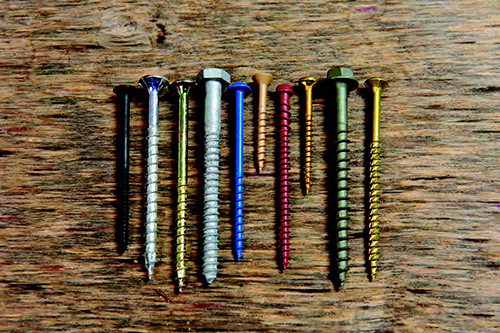
This woodworker uses soap to get her screws into oak (after drilling) but wonders if there isn’t a better lubricant?
Michael Dresdner: Soap’s pretty good. I use paste wax, but it is not necessarily betteronly more convenient for me. Either way, I am delighted she is soaping the screws; too few people do that these days and it really does help.
Lee Grindinger: While soap will help you drive a screw cleanly, there are a couple of other options. Beeswax is one popular choice and paraffin is another. I keep a block of paraffin in the shop for lubricating screws as well as a few other shop chores. Paraffin is useful as a dry lubricant on saw tables, fence rails, jointer and planer tables and sticky drawers. Paraffin is available in most supermarkets in the canning aisle, and it’s quite cheap.
Driving screws can be a challenge, especially in hard woods. In soft woods, the pilot hole should be the diameter of the shank of the screw, but in harder woods I increase the size of the pilot somewhat. In addition to lubricant such as paraffin or beeswax, you can make a screw for cutting threads into very hard woods like bubinga, hickory or oak by filing a couple of grooves through the threads, leaving the leading edge of the threads sharp. Drive this threading screw to depth and replace it with a regular screw. As the screw goes deeper, you’ll need to back it out to add more paraffin and remove the waste. On shorter screws or into softer woods, a properly sized pilot and a bit of paraffin or beeswax should do the job. If you’re using a lot of wood screws that have a tapered shank, it may be a good investment to buy a set of tapered drill bits.





